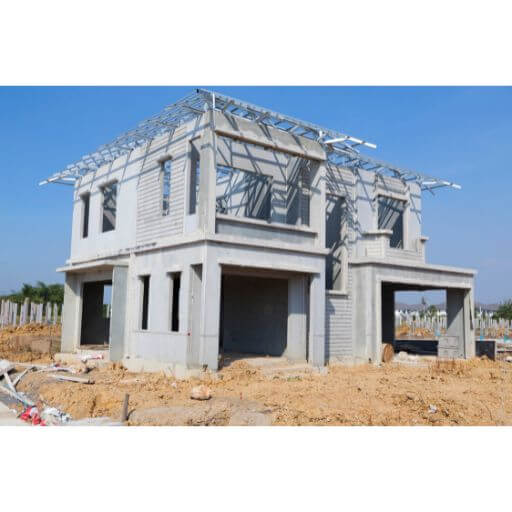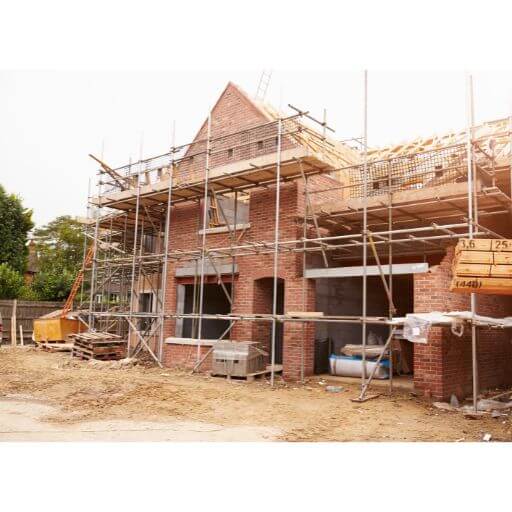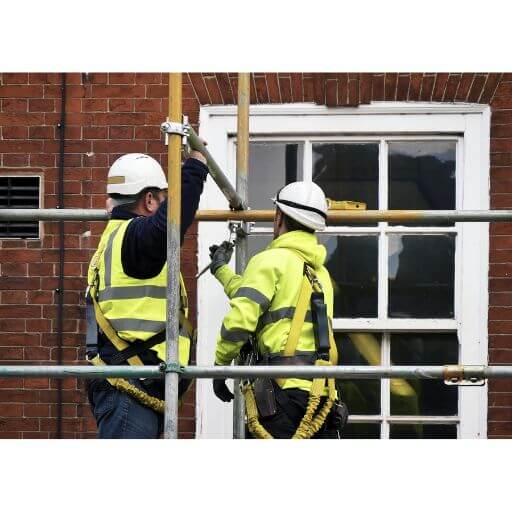
So, you’ve noticed some issues with the lintel in your building and you’re wondering if you can just go ahead and replace it.
Well, it’s important to know whether or not you need permission before you start any construction work. In this article, we’ll explore whether or not you need permission to replace a lintel and what steps you should take to ensure you’re following the correct procedures. Let’s find out if you need to ask for the green light before tackling that replacement project!

Overview of Lintels
Definition of a Lintel
A lintel is a horizontal structural element that spans an opening such as a door or window. It is commonly made of materials such as concrete, steel, or wood and is designed to support the weight of the structure above it. Lintels play a crucial role in maintaining the integrity and stability of a building’s structure.
Function of a Lintel
The primary function of a lintel is to distribute the weight of the load above it and transfer it to the surrounding walls or columns. By providing support, they ensure that the opening they span remains structurally sound and capable of withstanding external forces. Additionally, lintels can assist in preventing the deformation or sagging of the structure.
Types of Lintels
Lintels come in various types, each suited to different structural requirements. One common type is the prestressed concrete lintel, which uses steel reinforcement to withstand heavy loads. Steel lintels are also widely used, offering strength and flexibility. For certain applications, wooden lintels may be used, especially in traditional or historical buildings. Each type of lintel has its own benefits and considerations, and the choice depends on factors such as load requirements, aesthetic preferences, and budget constraints.
Importance of Replacing Lintels
Signs of a Damaged Lintel
Identifying a damaged lintel is essential to prevent further structural issues. Common signs of a damaged lintel include visible cracking, bowing or sagging of the lintel, and the presence of large gaps or separation between the lintel and the surrounding wall. In some cases, they may show signs of corrosion or decay, especially if it is made of wood or has been exposed to moisture.
Potential Risks of Not Replacing a Damaged Lintel
Neglecting a damaged lintel can have severe consequences for the stability and safety of a building. As lintels bear the weight of the structure above them, a compromised lintel can lead to structural failure, including the collapse of walls or ceilings. Over time, the additional stress on the surrounding walls can further weaken the overall structure, potentially endangering occupants and causing extensive damage.
Benefits of Replacing a Lintel
Replacing a damaged lintel promptly is crucial for maintaining the structural integrity of a building. By replacing a faulty lintel, you ensure that the load is properly distributed and the surrounding walls remain stable. This not only prevents further damage but also promotes the safety and longevity of the structure. Additionally, replacing a damaged lintel can improve the aesthetics of the building by restoring the original appearance of the opening and potentially increasing its value.
Understanding Building Regulations
Role of Building Regulations
Building regulations are a set of rules and standards that govern construction work to ensure the safety, health, and welfare of occupants and the surrounding environment. These regulations exist to establish minimum requirements for structural integrity, fire safety, energy efficiency, accessibility, and more. Compliance with building regulations is crucial to avoid legal consequences and to ensure that buildings meet the necessary standards.
Building Regulations for Structural Alterations
Structural alterations, such as replacing a lintel, fall within the scope of building regulations. When replacing a lintel, it is essential to comply with the relevant regulations to guarantee the structural integrity and safety of the building. These regulations typically cover aspects such as the size and strength requirements of the lintel, the method of installation, and the need for appropriate structural calculations or drawings.
Specific Regulations Regarding Lintels
Certain regulations specifically relate to the replacement of lintels. For instance, building regulations may stipulate the required size and material specifications for lintels based on the type of load they need to support. Additionally, regulations may outline the necessary qualifications or certifications for professionals carrying out the replacement work. Familiarizing yourself with these specific regulations is crucial to ensure compliance and the successful execution of the replacement project.
When Permission Is Required
List of Permitted Development Rights
Permitted development rights are a set of rules that determine what building work can be carried out without the need for planning permission. While replacing a lintel may not always require planning permission, it is important to understand the permitted development rights for your specific situation. Permitted development rights typically cover aspects such as the size, appearance, and location of the replacement.
Exceptions Requiring Planning Permission
In certain circumstances, replacing a lintel may require planning permission. Some exceptions that may warrant planning permission include alterations to listed buildings, changes to the appearance of the building’s façade, or work in designated conservation areas. It is essential to consult with local planning authorities or professionals to determine if your replacement project falls within these exceptions.
Situations Involving Listed Buildings
Listed buildings are structures that have significant historical or architectural value and are legally protected. When replacing a lintel in a listed building, you must obtain consent from the local planning authority, as any alterations to the building’s fabric can impact its historic character. It is advisable to work closely with conservation officers or heritage specialists to ensure that the replacement meets the necessary requirements while preserving the building’s heritage.

Seeking Professional Advice
Consulting a Structural Engineer
Replacing a lintel is a complex task that requires professional expertise. It is highly recommended to consult a licensed structural engineer, especially when dealing with significant structural alterations or complex replacements. A structural engineer can assess the existing structure, determine the appropriate lintel specifications, and provide detailed calculations or drawings to ensure the replacement meets the necessary standards.
Engaging an Architect
Engaging an architect can be beneficial, especially when the replacement affects the aesthetics or architectural integrity of the building. An architect can provide design solutions that seamlessly integrate the new lintel while maintaining the overall visual coherence of the structure. Their expertise can also help navigate the complexities of planning permissions and building regulations, ensuring a successful project outcome.
Hiring a Building Contractor
Once you have obtained the necessary professional advice and approvals, hiring a reputable building contractor is crucial for the successful execution of the replacement project. Look for contractors with relevant experience in lintel replacements, proper licensing, and insurance coverage. Request references and examples of their past work to ensure they have a proven track record of delivering high-quality results.
The Process of Replacing a Lintel
Initial Assessment and Inspection
The process of replacing a lintel begins with an initial assessment and inspection of the existing lintel and surrounding structure. A structural engineer or a qualified professional will assess the condition of the lintel, identify any damage or structural issues, and determine the appropriate replacement method and lintel specifications. This assessment also helps in obtaining accurate cost estimates and timeframes for the replacement project.
Obtaining Necessary Permissions
Before commencing the replacement, it is crucial to obtain any necessary permissions, such as planning permission or listed building consent, as discussed earlier. Carefully review the requirements and guidelines provided by the local planning authority and ensure all necessary paperwork is completed and submitted. Failure to obtain the required permissions can result in legal consequences and delays in the project.
Selecting Appropriate Materials
Once the necessary permissions are in place, the selection of appropriate materials for the replacement is vital. Consult with professionals to determine the suitable material based on factors such as load-bearing requirements, aesthetic considerations, and budget constraints. Ensure that the chosen materials comply with relevant building regulations and meet the specified standards for strength and durability.
Engaging Skilled Tradespeople
Replacing a lintel requires skilled tradespeople familiar with structural alterations. Engage professionals who have experience in replacements, as they possess the necessary expertise to complete the project safely and efficiently. Skilled tradespeople will follow the specifications provided by the structural engineer or architect, ensuring the replacement is carried out accurately and in compliance with the required standards.
Executing the Replacement
The execution of the replacement involves carefully removing the existing lintel and installing the new one. Skilled tradespeople will follow the recommended procedures, taking care not to cause additional damage to the surrounding structure. The installation process may include temporarily supporting the load above the opening, removing and replacing the damaged lintel, and ensuring proper alignment and secure fixing of the new lintel. The execution phase requires careful coordination and adherence to safety protocols to minimize disruptions and ensure a successful replacement.

Funding and Financial Considerations
Cost Estimates for Lintel Replacement
The cost of replacing a lintel can vary depending on several factors, such as the size of the opening, the material chosen, the complexity of the installation, and the extent of any associated repairs. It is advisable to obtain detailed cost estimates from qualified professionals to accurately assess the financial implications of the replacement project. Consider budgeting for any additional costs that may arise during the execution due to unforeseen issues or changes in project scope.
Availability of Grants or Assistance
In some cases, financial assistance may be available for replacement projects. Local government initiatives, historic preservation organizations, or community grants may offer funding or support for certain types of building renovations, including lintel replacements. Research local programs or consult professionals with knowledge of available assistance to explore possible funding opportunities.
Insurance Coverage
Review your insurance coverage to determine if the replacement is covered under your existing policy. While insurance coverage may vary, it is worth investigating whether any damages or accidents during the project are eligible for reimbursement. Consult your insurance provider for specific details regarding coverage, policy limits, and any requirements for providing evidence or documentation related to the replacement work.
Case Studies and Examples
Real-Life Examples of Lintel Replacement
Examining real-life examples of replacements can provide valuable insights into the process and outcomes. Case studies can showcase different approaches, challenges faced, and successful solutions employed in various scenarios. Consider researching and reviewing case studies from reputable sources or consulting with professionals who have firsthand knowledge of successful replacement projects.
Success Stories and Lessons Learned
Learning from success stories and lessons learned from previous replacement projects can offer valuable guidance for your own project. Understanding the strategies and techniques that led to successful outcomes, as well as the challenges encountered and how they were overcome, can help you anticipate potential issues and make informed decisions throughout the replacement process.
Challenges Faced and How They Were Overcome
Lintel replacement projects can present unique challenges, especially when it comes to working with existing structures and navigating building regulations. Examining specific challenges faced during past projects and the strategies employed to overcome them can provide valuable insights. Whether it’s addressing structural complexities, coordinating with multiple stakeholders, or mitigating unforeseen issues, understanding how challenges were managed can help you plan and execute your own replacement project more effectively.

Conclusion
Importance of Seeking Permission
When replacing a lintel, it is crucial to understand and comply with the necessary permissions and regulations to ensure a successful and legal project. Consult local planning authorities, engage professionals, and obtain the required approvals to avoid potential setbacks and legal consequences.
Awareness of Building Regulations
Having a good understanding of building regulations, particularly those related to replacements, is essential. Familiarize yourself with the requirements, standards, and certifications to ensure compliance and maintain the structural integrity and safety of the building.
Professional Guidance for Successful Replacement
Seeking professional advice from structural engineers, architects, and qualified tradespeople is crucial for a successful replacement project. Their expertise, experience, and guidance can ensure accurate assessments, appropriate material selection, compliant execution, and a satisfactory outcome. Working with professionals also minimizes the risk of structural issues and enhances the safety and longevity of the building.











